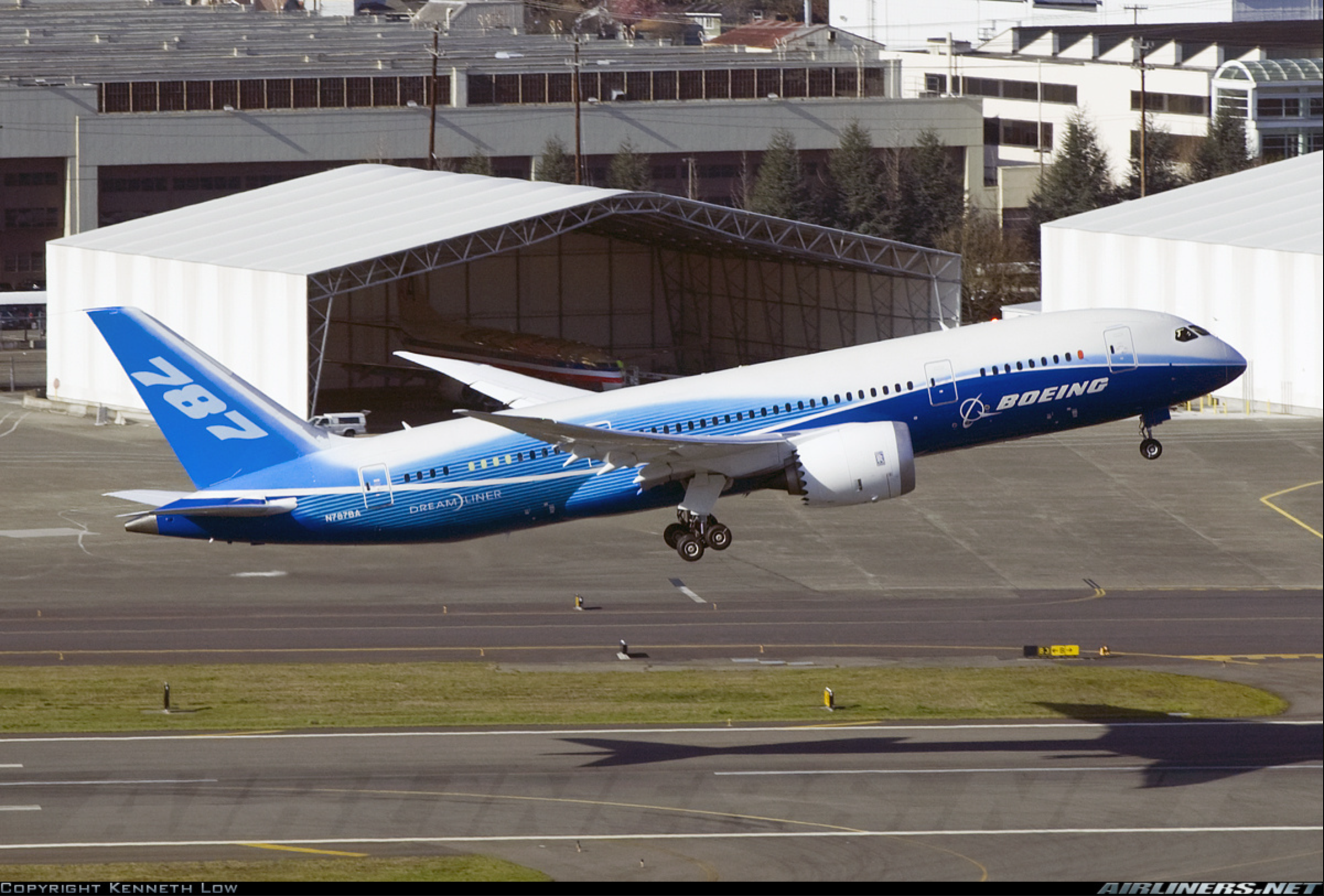Wing Flex: Difference between revisions
No edit summary |
No edit summary |
||
| (2 intermediate revisions by the same user not shown) | |||
| Line 1: | Line 1: | ||
[[File:Boeing_787_Wing_Flex.png|393x393px|thumb|right|Boeing 787-8 flexing its wings.]] | |||
[[File:Boeing_787_Wing_Flex.png| | |||
'''Wing flex''' in aviation refers to the inherent flexibility of airplane wings, a feature that has evolved from early wing warping techniques to modern aircraft with advanced materials and designs. While the [[Wright brothers]]'s initial flight utilized wing warping for control, modern aircraft benefit from flexible wings in various ways, including improving passenger comfort by absorbing turbulence and potentially enhancing control and performance. | '''Wing flex''' in aviation refers to the inherent flexibility of airplane wings, a feature that has evolved from early wing warping techniques to modern aircraft with advanced materials and designs. While the [[Wright brothers]]'s initial flight utilized wing warping for control, modern aircraft benefit from flexible wings in various ways, including improving passenger comfort by absorbing turbulence and potentially enhancing control and performance. | ||
== Early Development == | |||
'''Wing Warping''': The Wright brothers used a system of cables and pulleys to twist the trailing edges of their wings, allowing for roll control, [https://en.wikipedia.org/wiki/Wing_warping according to Wikipedia]. | '''Wing Warping''': The Wright brothers used a system of cables and pulleys to twist the trailing edges of their wings, allowing for roll control, [https://en.wikipedia.org/wiki/Wing_warping according to Wikipedia]. | ||
| Line 12: | Line 9: | ||
'''Hang Gliders and Ultralights''': Since the 1960s, flexible wings have been dominant in hang gliders and ultralight aircraft designs, [https://en.wikipedia.org/wiki/Ultralight_aircraft according to Wikipedia]. | '''Hang Gliders and Ultralights''': Since the 1960s, flexible wings have been dominant in hang gliders and ultralight aircraft designs, [https://en.wikipedia.org/wiki/Ultralight_aircraft according to Wikipedia]. | ||
== Modern Applications == | |||
'''Turbulence Absorption''': Flexible wings, particularly those made of composite materials like carbon fiber, help absorb turbulence, leading to a smoother ride for passengers, [https://www.turbli.com according to Turbli]. | '''Turbulence Absorption''': Flexible wings, particularly those made of composite materials like carbon fiber, help absorb turbulence, leading to a smoother ride for passengers, [https://www.turbli.com according to Turbli]. | ||
| Line 21: | Line 18: | ||
'''Boeing 787''': The Boeing 787 Dreamliner's wings are known for their flexibility, which is visible during extreme tests and can be observed during normal flights, [https://www.youtube.com/watch?v=Wl2yyvFBEco according to a YouTube video]. | '''Boeing 787''': The Boeing 787 Dreamliner's wings are known for their flexibility, which is visible during extreme tests and can be observed during normal flights, [https://www.youtube.com/watch?v=Wl2yyvFBEco according to a YouTube video]. | ||
== Key Concepts == | |||
'''Dihedral and Incidence''': The Waterman Flex-Wing used a hinged wing to control dihedral (the angle between the wing and the fuselage) and incidence (the angle of attack of the wing), [https://en.wikipedia.org/wiki/Wing_configuration according to Wikipedia]. | '''Dihedral and Incidence''': The Waterman Flex-Wing used a hinged wing to control dihedral (the angle between the wing and the fuselage) and incidence (the angle of attack of the wing), [https://en.wikipedia.org/wiki/Wing_configuration according to Wikipedia]. | ||
| Line 30: | Line 27: | ||
=== External Link === | === External Link === | ||
* [https://imgproc.airliners.net/photos/airliners/4/2/7/1675724.jpg?v=v40 Airliners.net – Boeing 787 Wing Flex] | * [https://imgproc.airliners.net/photos/airliners/4/2/7/1675724.jpg?v=v40 Airliners.net – Boeing 787 Wing Flex] | ||
Latest revision as of 14:15, 17 April 2025

Wing flex in aviation refers to the inherent flexibility of airplane wings, a feature that has evolved from early wing warping techniques to modern aircraft with advanced materials and designs. While the Wright brothers's initial flight utilized wing warping for control, modern aircraft benefit from flexible wings in various ways, including improving passenger comfort by absorbing turbulence and potentially enhancing control and performance.
Early Development
Wing Warping: The Wright brothers used a system of cables and pulleys to twist the trailing edges of their wings, allowing for roll control, according to Wikipedia.
Early Designs: Some early aircraft, like the Waterman Flex-Wing, incorporated flexible wings for various purposes, according to Wikipedia.
Hang Gliders and Ultralights: Since the 1960s, flexible wings have been dominant in hang gliders and ultralight aircraft designs, according to Wikipedia.
Modern Applications
Turbulence Absorption: Flexible wings, particularly those made of composite materials like carbon fiber, help absorb turbulence, leading to a smoother ride for passengers, according to Turbli.
Control and Performance: The flexibility of some wings allows for a finer control of lift and drag, potentially improving aerodynamic efficiency, according to IEEE Spectrum.
Active Aeroelastic Wings: NASA's research on the F/A-18 Active Aeroelastic Wing project explored the potential of flexible wings for control and performance enhancement, according to NASA.
Boeing 787: The Boeing 787 Dreamliner's wings are known for their flexibility, which is visible during extreme tests and can be observed during normal flights, according to a YouTube video.
Key Concepts
Dihedral and Incidence: The Waterman Flex-Wing used a hinged wing to control dihedral (the angle between the wing and the fuselage) and incidence (the angle of attack of the wing), according to Wikipedia.
Aspect Ratio: The length-to-width ratio of a wing, with higher aspect ratios often associated with thinner, more flexible wings, according to Turbli.
Camber: The curvature of a wing's cross-section, which can be adjusted with flexible wings to optimize lift and reduce drag, according to IEEE Spectrum.
